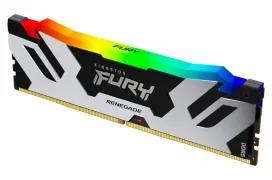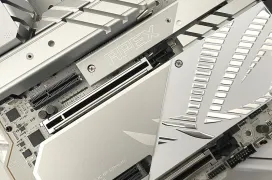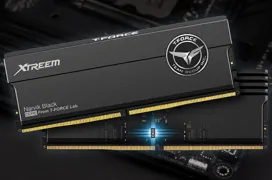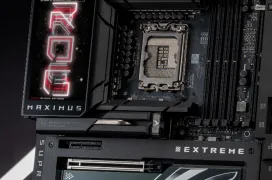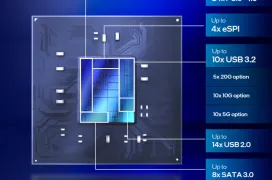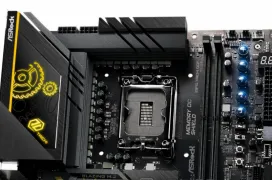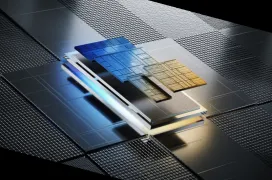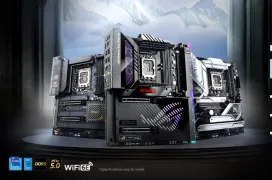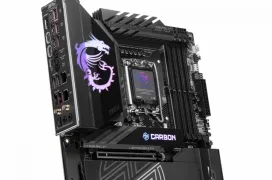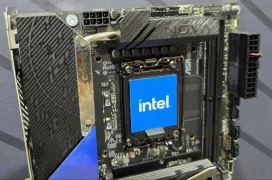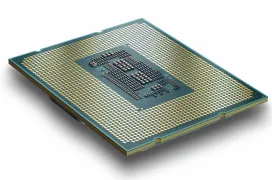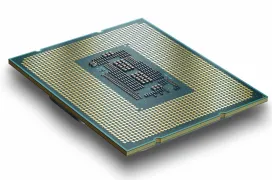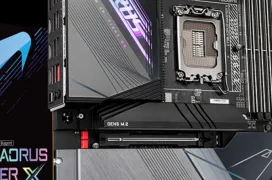Chipset Intel Z890
ASUS y G.SKILL rompen el récord de overclock de DDR5 alcanzando los 12.112 MT/s
La llegada de la plataforma Intel Z890 parece haber abierto un nuevo horizonte para el overclock, si bien no para la CPU, al menos para la memoria DDR5. En las últimas semanas hemos visto como se superaban distintos records de overclock, y...
Las nuevas memorias CUDIMM de Kingston FURY alcanzan los 8.400 MT/s y están disponibles con y sin RGB
Subiéndose a la moda de las nuevas memorias DDR5 CUDIMM, Kingston también ha presentado su nuevo modelo con este tipo de módulos DDR5, las Kingston FURY Renegade DDR5 CUDIMMs. Un nombre con el que no se han complicado bajo su...
ASUS ROG MAXIMUS Z890 APEX Review
Con la llegada de los nuevos procesadores Core Ultra para sistemas de sobremesa, con el nuevo Socket LGA1851, llegan también nuevos chipsets y, con ellos, nuevas placas base. La ASUS ROG MAXIMUS Z890 ha sido nuestra elegida para dar un recorrido inicial a este chipset Intel Z890 y a sus nuevos
MSI MEG Z890 ACE Review
Con el lanzamiento de estos nuevos procesadores Intel Core Ultra Series 2 para el mercado doméstico, los fabricantes de placas base se afanan en renovar sus modelos más reconocibles. La gama MEG ACE de MSI es uno de esos referentes, y esta generación viene de la mano de conectividad avanzada y
Visitamos la Innovadora Fábrica de MSI en China donde hacen sus placas Z890
MSI lleva 40 años fabricando placas base, a lo que se suma una larga trayectoria con las tarjetas gráficas. Un negocio que ha ido en aumento, incorporando otras líneas de producto de la que tambien se enorgullecen de tener su propia fabricación. Aunque MSI tiene su sede principal en Taiwán, esta
Las memorias DDR5 TeamGroup T-Force Xtreem CKD alcanzan los 9.000 MHz de serie
8.800 MHz, esa es la cifra que han conseguido alcanzar en Teamgroup en sus nuevos módulos T-Force Xtreem CKD para la plataforma Intel Z890 y los procesadores Intel Core Ultra 200K "Alder Lake S" cuando se combinan en 4...
El chipset Intel Z890 para Arrow Lake llega a las gamas ASUS ROG Maximus, ROG Strix, TUF Gaming, Prime y ProArt
ASUS ha actualizado todas su catálogo de placas base para procesadores Intel para dar cabida al nuevo chipset Z890 junto al socket LGA1851, ambos necesarios para poder utilizar los nuevos procesadores Intel Core Ultra 200K "Alder...
El Chipset Intel de la serie 800 viene con hasta 10 USB 3.2, conectividad WiFi 6E y 24 carriles PCie 4.0
Junto a los Intel Arrow Lake, el fabricante también ha anunciado el nuevo chipset que acompañará a esta decimoquinta generación de procesadores. El chipset de la serie 800 incluye novedades como carriles PCIe 4.0,...
Filtradas las 12 placas que lanzará ASRock con chipset Z890, incluida una Mini-ITX
Aunque faltan unos días y aún no se ha anunciado su lanzamiento de forma oficial, todos los rumores apuntan a este día 10 como el lanzamiento de los Intel Arrow Lake. Cada vez son más los indicios de que esta fecha...
MSI ha anunciado que la placa MEG UNIFY-X llegará pronto
Todos los rumores apuntan a que el próximo día 10 Intel presentará los nuevos procesadores Arrow Lake para equipos de escritorio, los Intel Core Ultra 200. A falta de una confirmación oficial por parte de Intel, parece...
Las reviews de los Intel Arrow Lake, junto con las placas Z890 estarán disponibles el día 24 de octubre según los últimos rumores
A medida que se acerca la fecha rumoreada para el lanzamiento de los nuevos procesadores para equipos de escritorio de Intel, los Arrow Lake, siguen surgiendo rumores confirmando la fecha de lanzamiento para el 10 de octubre. Según un post...
Filtrados los datos de la placa MSI MEG Z890 Unifiy-X con tarjeta de red Intel Killer de 5 Gbps y WiFi 7
Ya habíamos visto filtradas fotos de la nueva placa MSI MPG Z890 Carbon WiFi, que podrá llevar los nuevos Intel Arrow Lake para equipos de escritorio que se espera se presenten el próximo 10 de octubre. Otro modelo de MSI ha...
Aparecen en Geekbench 6 el Core Ultra 9 285K y el Core Ultra 7 265KF consiguiendo 3.186 puntos en un solo núcleo
Los rumores apuntan a que el próximo 10 de octubre Intel presentará su nueva serie de procesadores Arrow Lake. Una serie que será anunciada este día 10 y que también se rumorea estará disponible 2 semanas...
Casi 50 modelos de placas base con chipset Z890 han registrado entre ASUS y Gigabyte
Intel presentará nuevos procesadores Arrow Lake para equipos de escritorio, también conocidos como Core Ultra 200, para el próximo 10 de octubre. Estos procesadores cuentan con un nuevo socket LGA1851 que...
Aparecen fotos de la placa MSI MPG Z890 Carbon Wifi para los Intel Arrow Lake
Se espera que el próximo 10 de octubre Intel presente los procesadores Arrow Lake para equipos de escritorio. Junto a esta nueva decimoquinta generación de procesadores, también se lanzará una nueva serie de placas...
Hasta 13 nuevos modelos, incluidos Micro ATX y m-ITX tiene preparados ASRock para los Intel Arrow Lake
Durante este Gamescom 2024, ASRock nos ha enseñado sus nuevas placas con chipset X870E/X870 para los nuevos procesadores AMD Ryzen 9000 Series. Un total de 6 placas para estas nuevas CPUs de AMD con núcleos Zen 5, que se quedan...
MSI presentará nuevas placas con chipset Z890 y dos nuevos monitores QD-OLED para gaming en la GAMESCOM
El próximo gran evento que podremos ver a nivel mundial es la GAMESCOM que se celebra la semana próxima en Colonia, Alemania. En este evento dedicado a los jugadores, los fabricantes también aprovechan para presentar sus...
AIDA64 se actualiza para corregir información de un sensor en una placa MSI con chipset Z890
Los fabricantes de software que permiten analizar el sistema siempre tienen que ir un paso por delante para poder ofrecer soporte a las novedades que llegarán próximamente. Estos desarrolladores trabajan en conjunto con los...
Aparece una placa Gigabyte sin terminar con el nombre del chipset Z890 y compatible con los Intel Core Ultra
Las tarjetas gráficas retrasadas hasta 2025, Intel parece que también ha retrasado la fecha de los Arrow Lake-S para equipos de escritorio, inicialmente rumoreada para octubre, y que se va a diciembre de este año. Pero eso no...
Filtrado el diagrama de E/S de los Intel Arrow Lake y los Chipset 800 Series, PCIe 5.0 para tarjetas y discos SSD
Aunque Intel tiene en silencio el lanzamiento de los próximos Arrow Lake-S para equipos de escritorio, se dice que se presentarán durante el evento que Intel suele celebrar en octubre. Cada vez se acerca más la fecha y...
Se filtran ocho placas Z890 de Gigabyte para las CPUs Intel Arrow Lake-S
Se han filtrado un gran número de las placas base de Gigabyte con el próximo chipset Intel Z890 para Arrow Lake-S, que previsiblemente serán los "Intel Core Ultra 200". El socket de estas placas será el Intel...




